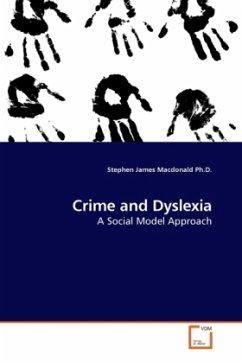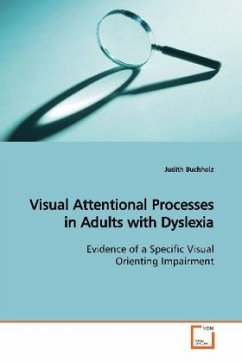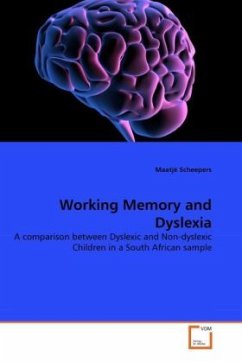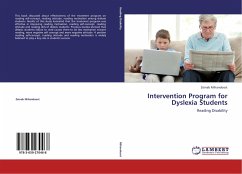
The Key to Dyslexia?
Similarities between acquired dyslexia, developmental dyslexia and early reading
Versandkostenfrei!
Versandfertig in 6-10 Tagen
52,99 €
inkl. MwSt.

PAYBACK Punkte
26 °P sammeln!
Controversial, complex and multi-faceted, dyslexia has defied attempts at a consensus about its nature, underlying causes, and the methodology by which it should be studied; some even believe that it does not exist. This ground-breaking book sets out to unite three major areas of reading research which have traditionally been regarded as discrete disciplines: acquired dyslexia, which is caused by brain injury; developmental dyslexia, and normal early reading development. Employing innovative techniques, the similarities and contrasts between these three groups are investigated. Current theorie...
Controversial, complex and multi-faceted, dyslexia
has defied attempts at a consensus about its nature,
underlying causes, and the methodology by which it
should be studied; some even believe that it does
not exist. This ground-breaking book sets out to
unite three major areas of reading research which
have traditionally been regarded as discrete
disciplines: acquired dyslexia, which is caused by
brain injury; developmental dyslexia, and normal
early reading development. Employing innovative
techniques, the similarities and contrasts between
these three groups are investigated. Current
theories and methodologies for studying these areas
are reviewed, and possible cognitive and biological
mechanisms which may underlie the literacy
characteristics of the three groups are suggested.
The compelling conclusion from the studies in this
book is that a fleetingly brief period of normal
reading development may hold the key.
has defied attempts at a consensus about its nature,
underlying causes, and the methodology by which it
should be studied; some even believe that it does
not exist. This ground-breaking book sets out to
unite three major areas of reading research which
have traditionally been regarded as discrete
disciplines: acquired dyslexia, which is caused by
brain injury; developmental dyslexia, and normal
early reading development. Employing innovative
techniques, the similarities and contrasts between
these three groups are investigated. Current
theories and methodologies for studying these areas
are reviewed, and possible cognitive and biological
mechanisms which may underlie the literacy
characteristics of the three groups are suggested.
The compelling conclusion from the studies in this
book is that a fleetingly brief period of normal
reading development may hold the key.












